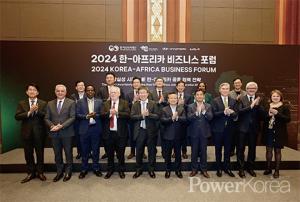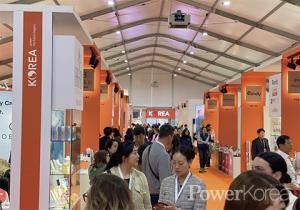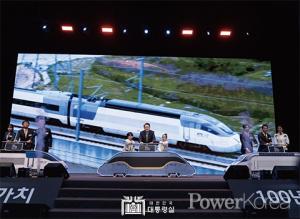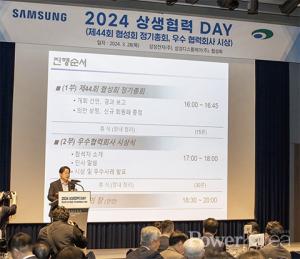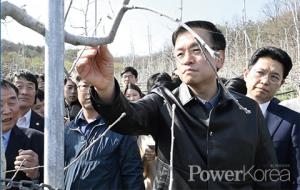- GFRP rock bolt passes quality tests of Korea Expressway Corporation, and Korail Building a fully automatic production base Securing annual production capacity of 40,000 tons (160,000 tons based on re
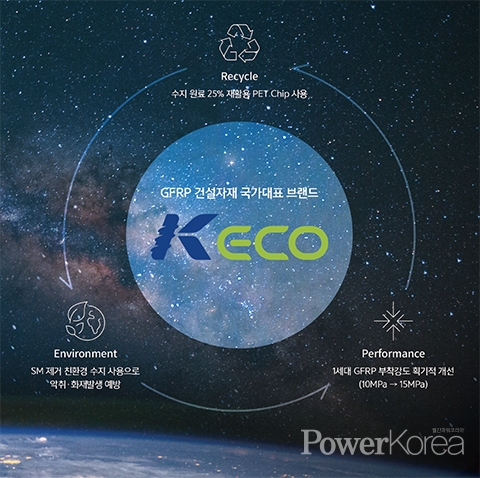 |
||
The greatest achievement in human history was the discovery of iron. Humans started making iron tools around 2000 BC that is about 4000 years ago. Since the discovery of iron, civilization has developed rapidly, and even today, iron has a tremendous impact on our lives. However, as an eco-friendly wind is blowing around the world, voices calling for the reduction of steel production continue to grow.
The steel industry has the highest carbon dioxide emissions. According to data released by the World Steel Association, an average of 1.83 tons of carbon dioxide is emitted per ton of steel. Steel accounts for a whopping 24% of the total industry’s carbon dioxide emissions, yet as the world’s population grows, the demand for steel continues to grow. The existing steel companies are making various efforts such as emission control and adjustment of core metallurgical technology to achieve carbon neutrality, but they are not showing great results. Amid this struggle, a South Korean company KCMT has developed GFRP, a glass-reinforced fiber plastic that can replace the existing iron, is attracting a great attention. <PowerKorea> met CEO Kim Jun-young.
KCMT as a leader of GFRP
Leading the market by making the first GFRP quality standards in Korea
GFRP is a material made to replace rebar that has been used by modern society for 100 years. Rebar is strong, but at the same time corrosive. The amount of carbon emission from fuel used to make rebar is also becoming a big burden in the environment-friendly era. However, modern architecture has no choice but to move away from the steel structure, and it is GFRP that has recently received great attention as a substitute for it. KCMT has the best GFRP production technology in Korea that has started GFRP research in 2009 and established a corporation in 2014. At that time, GFRP was well known abroad, but not in the domestic market. Since there was no standard to sell the product even if it was produced, CEO Kim sought help from the Korea Expressway Corporation and the Korea Railroad Corporation for many years. As a result, the Korea Expressway Corporation created a standard for producing rock bolts for tunnel construction and KCMT was the first in the industry to be certified for the quality of GFRP rock bolts by the Ministry of Land, Infrastructure and Transport and Korea Expressway Corporation in 2016. KCMT is the only company in Korea to supply GFRP rock bolts to Korea Expressway Corporation and actively apply it to the national infrastructure construction project, and has been leading the domestic GFRP quality standards.
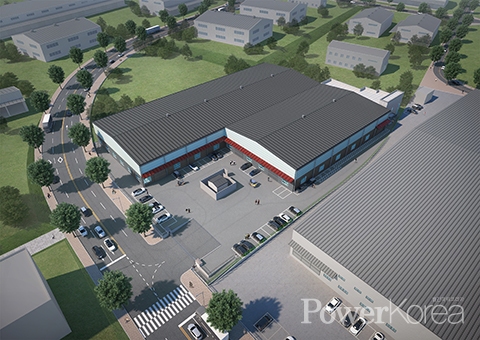 |
100 years of lifespan, lightweight by only 1/4 compared to rebar, and excellent thermal barrier properties for non-magnetic insulators
KCMT’s GFRP is a semi-permanent with a lifespan of 100 years. Construction costs can be reduced by extending the lifespan of civil engineering structures as a result as well as maintenance costs and slimming the structures. Since the unit weight is only 1/4 of that of rebar, various construction costs such as labor cost, equipment cost, and logistics cost can also be reduced. These innovative advantages help in preventing safety accidents that may occur in the field, and structural stability can also be secured due to twice the tensile strength of rebar.
In the case of steel, it may exhibit magnetism depending on current or magnetic flow, so the use of rebar is not suitable for buildings that require the use of equipment sensitive to electromagnetic fields such as MRI. GFRP, on the other hand, is a non-magnetic insulator, and it can be a better option as it has thermal barrier properties and non-flammability, so even if a fire occurs, it does not catch fire easily at the site, and it is easy to excavate without damages to machines and equipment.
KEco rebar re-uses wasted plastic with productivity and usability
GFRP is superior to general rebar in terms of environment. Carbon emission during manufacturing is 43% of that of rebar, and unlike rebar that produces waste materials due to corrosion, it does not corrode and requires no re-maintenance, so waste materials are produced less. GFRP also can be recycled into other products. KCMT developed this eco-friendly GFRP in an even more eco-friendly way, launched the GFRP brand ‘KEco rebar’ in cooperation with Carbon Fiber & Young, an eco-friendly new material technology company, and completed the construction of a large-scale production line. KEco rebar is made from recycled PET chips from colored PET containers, which are the most difficult to recycle among discarded plastic resources. It recycles household PET bottles and industrial PET sludge, and 1m of KEco rebar can be produced with one colored/mixed 2.0L PET bottle. This reinforces the only weakness of GFRP.
However, despite these advantages, GFRP was avoided in the field because its production cost was higher than that of iron. Yet, due to the recent rise in steel prices which has reached a level similar to that of GFRP, and since KEco rebar uses recycled PET, it is very good in terms of eco-friendliness. It is natural that carbon dioxide emissions are reduced by 43% compared to reinforced concrete, and energy produce can also be reduced by up to 45%.
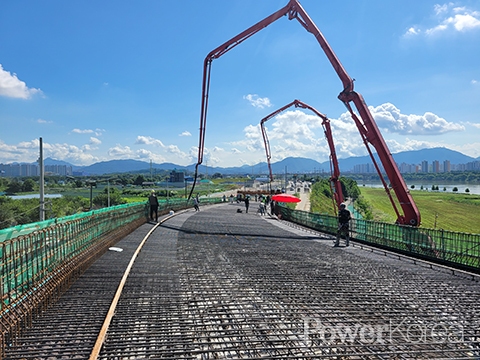 |
Automated production line for standardized products
Same quality regardless any part of products
Another advantage of KEco rebar is that the product is integrated and all manufacturing processes are automated. In the case of reinforcing bars used in civil works, adhesion to concrete is very important. When the concrete is separated from the reinforcing bars, cracks are formed in the structure, reducing the stability and lifespan of the structure. Most of the products currently sold on the market use a secondary process such as making protrusions or attaching silica sand through a secondary process to prevent this phenomenon. This, however, induces a phenomenon in which the material attached to the GFRP is separated together with the concrete, which is a factor that further lowers the adhesion of the product. Since KCMT produces GFRP products in one piece without a secondary process, the adhesion is quite high, so structures with excellent stability and robustness can be constructed. In addition, since all manufacturing processes are automated, it is also a big difference to note that products with the same performance can be used even if the ingredients of the product are uniformly cut and used.
Removing styrene monomer for more eco-friendliness
Expand production capacity to 40,000 tons per year in 2023, equivalent to 160,000 tons based on rebar
It is a great advantage that the products of KCMT are removed with styrene monomer (SM). SM is a resin component that is essential for most of the existing GFRPs and is considered to be the main cause of fires along with odors. KEco rebar uses an ingredient that replaces this SM, so the product does not emit odor and the risk of fire is low, providing a safe working environment for workers. Among domestic and foreign products, KEco rebar is the only GFRP product that uses SM substitute resin, and it can be said that it shows KCMT’s excellent eco-friendly technology capability. KEco rebar received great attention at Korea Build 2022, Korea’s global architecture fair, and from various domestic and foreign exhibitions.
KCMT is currently constructing a second factory on a site of 46,280 square meter land in Ulju-gun and will soon complete the construction. The company plans to automate and localize all process facilities, and build 80 dedicated production lines for KEco rebars. By 2023, the company plans to secure a production capacity equivalent to 40,000 tons per year, or 160,000 tons based on rebar. When things ready, the company is to accelerate the development of overseas markets including Germany, the United States, Australia, Singapore, Indonesia, and the Philippines.
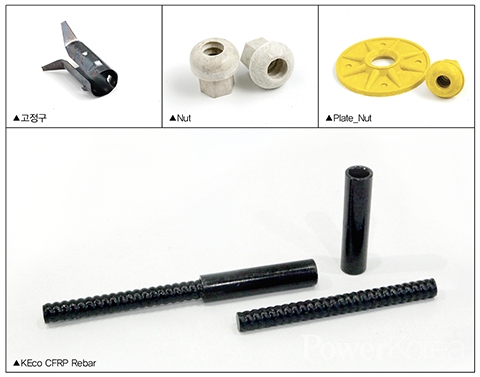 |
GFRP rock bolt passes quality tests of Korea Expressway Corporation, and Korail and secures safe tunnel constructions
Structurally higher safety is secured as the tensile strength is more than twice that of steel rock bolts
A ‘rock bolt’ is a reinforcing bar material inserted into the inner surface of a tunnel under construction to prevent the rock from falling due to cracks generated during tunnel excavation. Recently, the demand for rock bolts is increasing due to the continuous increase in the construction of tunnels including the metropolitan area express railroad and expressway underground. In addition, as concerns about poor construction have grown recently, the importance of rock bolts that are responsible for tunnel safety is gradually emerging. KCMT’s GFRP rock bolt is the sole bolt that passed quality tests of the Korea Expressway Corporation, and Korail. Naturally, KCMT is the sole company that supplies GFRP rock bolt to the Korea Expressway Corporation. The company has tremendous know-how and technology in the field of GFRP rock bolts, and it has received a lot of attention from around the world and has been exported to some countries. It is very light and easy to handle, especially in tunnel sites where it is inconvenient to transport building materials. Because of its high flexibility, even in situations where straight drilling is not possible, the rock bolt can be inserted, and it can be easily cut, so it can be used as a reinforcing rod or a removable rock bolt.
In particular, high-voltage electricity must be used at tunnel sites, and for this reason, there is a risk of electric shock in the case of steel construction materials. However, since GFRP rock bolts have non-conductive properties, there is no threat of electric shock, and due to their high thermal barrier properties and non-flammability, the fire does not spread to the surrounding area even if a fire breaks out during construction. In addition, it is excellent in durability and does not rust or corrode, so it prevents problems with tunnel safety due to aging of rock bolts. The tensile strength is more than twice that of steel rock bolts, so structurally higher safety can be secured.
A spur to the development of various new materials
To become a leader in the field of new construction materials
KCMT developed and applied for a patent on an exposed rock bolt method that exposes the rock bolt on the finished concrete surface when the rock bolt is installed during tunnel construction. The exposed part is protected with a waterproof sheet, and it is possible to check the quantity and quality at all times, preventing the risk of tunnel collapse due to un-management. In addition to rock bolts used in bedrock, soil nails used in soil have been developed, and all products are eco-friendly KEco rebar.
KCMT is spurring research and development of other new materials, and through this, plans to become a global company in the field of new materials. CEO Kim said, “We will do our best to commercialize our GFRP rock bolts in the construction market, and we will localize technologies for various new materials through continuous research and development to become a leader in the new construction materials.”
신태섭 기자 tss79@naver.com

